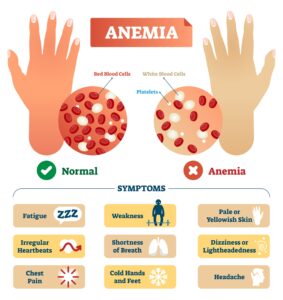Overview of Menkes disease
A faulty ATP7A gene causes Menkes disease, a hereditary genetic disorder. Menkes syndrome causes copper absorption deficiency. This results in arterial changes and degeneration of the brain. Menkes syndrome is uncommon. Children born with Menkes syndrome have a life expectancy of less than five years on average.
Epidemiology of Menkes disease
Menkes disease affects people of several ethnic backgrounds. Since the involved gene is situated on the X (female) chromosome, the afflicted gender is frequently male. Unless additional genetic abnormalities are present, females who have the mutant gene normally do not display symptoms. The incidence of Menkes disease is estimated to range between one per 100,000 and one per 250,000 live births.
Menkes disease history
Australian veterinary professionals in the 1930s noted the correlation between copper shortage and demyelinating disease in ataxic lambs to show copper’s essential role in mammalian neurodevelopment. Pregnant animal mothers fed on copper-deficient pastures gave birth to offspring with brain demyelination and severe pathologic abnormalities, such as porencephaly.
Approximately 40 years later, a physician called Danks identified Menkes syndrome as an example of copper deficiency-induced abnormal neurodevelopment in humans. Danks observed that the unique hair of newborns with Menkes syndrome resembled the brittle wool of Australian sheep grown on copper-deficient soil. In every instance in which he analyzed the serum copper concentrations of seven individuals with Menkes syndrome, he discovered low levels. Important copper enzyme ceruloplasmin levels were also below normal in the serum. Thus, evidence collected in Australia over a period of four decades regarding the effects of copper deficiency was very pertinent to an inherited metabolic illness in humans.
Menkes disease symptoms
The initial symptoms develop between two and three months of age and may include:
- Hair with kinks that is light-colored, white, or gray and readily breaks.
- Loose musculature (hypotonia).
- Low internal body temperature (hypothermia).
- Drooping facial features.
- Seizures (epilepsy).
- Sluggish expansion and weight gain (failure to thrive).
- Yellow complexion and eyes (jaundice).
Diagnosis
In milder cases and throughout infancy, copper and ceruloplasmin levels may be normal. Copper levels in the infant’s body may be normal for at least two weeks following birth. Initially, ceruloplasmin levels are between 6 and 12 mg/dL and only afterward are they deemed pathologically low. Preterm neonates exhibited even lower blood copper levels than term babies (21 mcg +/- 32 mcg/dL vs. 32 mcg +/- 21 mcg/dL). Additionally, fetal hair might be normal.
Following are the diagnostic results:
- Copper serum concentration 70 mg/dL (reference 80–160)
- Level of serum ceruloplasmin less than 20 mg/dL (reference 20–60).
Genetic tests are essential for correct diagnosis.
Treatment
- Important is the early treatment of Menkes disease (ideally within 28 days of birth, adjusted for preterm) Copper histidinate (CuHis), a novel freeze-dried molecular entity, has been shown to increase copper content in the blood and improve neurodevelopmental outcomes in some individuals. The degree of CuHis treatment effectiveness in older, symptomatic patients with Menkes disease is less known.
- To correctly appreciate the recurrence risk, afflicted children’s parents and relatives require genetic counseling.
- The addition of viral gene therapy to the previously outlined treatment might result in an improved prognosis.
More pediatrics articles are here: Pediatrics – Costamedic



